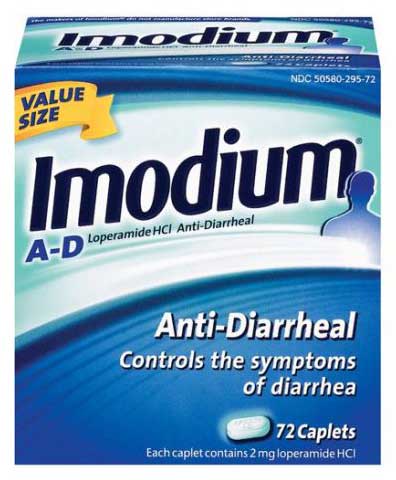A growing number of desperate opioid users who cannot get their hands on painkillers, such as Oxycontin and Vicodin, are turning to the anti-diarrhea drug Imodium to mitigate the symptoms of opioid withdrawal or satisfy their addiction. The said medication used to be a prescription drug and a controlled substance up until 1988 when it became an over-the-counter drug and became easier to access.

Why Addicts Turn to Imodium?
Imodium has an active ingredient, known as loperamide, which gives a certain high to any individual who consumes it in excessive amounts. A report that was published online also said that abuse of this drug has been linked to two deaths in New York as well as irregular heartbeats which are considered to be life-threatening, with about a dozen cases reported for the period of 18 months. It does not enter the central nervous and acts on the opioid receptors in the gastrointestinal tract. When taken in small doses, it will not result to a certain high but in excessive amounts, it can be fatal.
It was just recent that medical experts have discovered the proliferation of Imodium-abuse although toxicologists and doctors in emergency departments believe this growing problem is more widespread. According to lead author and SUNY Upstate Medical Center clinical toxicologist, William Eggleston, patients are taking it over a period of several months and are turning to loperamide to get high and manage muscle pains and other symptoms of opioid withdrawal.
Meanwhile, spokeswoman for the Food and Drug Administration, Sarah Peddicord, has already expressed their knowledge of the threatening growing habit and confirmed that they are going to do something about the problem.
“The F.D.A. is aware of recent reports of adverse events related to the intentional misuse and/or abuse of the anti-diarrhea product loperamide to treat symptoms of opioid withdrawal or produce euphoric effects.”
Loperamide, if taken in the recommended dose, of not exceeding four caplets or eight milligrams,is not harmful. However, people who abuse the use are reported to take up to 100 caplets of two milligrams on a daily basis.
There have been two cases of two individuals who lost their lives as the effect of taking excessive doses of the drug. One was a 39-year old man who underwent self-medication using the anti-diarrhea drug, instead of the prescribed buprenorphine to manage opioid withdrawal symptoms while another man, who was 24 years old, also died from the use of loperamide.
Since the drug is a non-prescription medication and is not expensive at only $7.59 for 4oo tablets, purchasing the drug in large amounts did not really raise a red flag. Experts also reiterated that the presence of loperamide in patients cannot be detected in routine drug screenings.
Patients who suffer from loperamide abuse show signs of lethargy and can manifest symptoms of heroin overdose. Because of this, the reversal drug given to patients is the anti-opioid drug, Naloxone.
Expert toxicologists are pushing on putting a limit on the sales of loperamide, just like the cap on the sales of pseudoephedrine, a non-prescription drug, 10 years ago. According to Dr. Eggleston, the FDA is going to believe the seriousness of the issue when more people will be creating noise about it.
Reference
http://www.nytimes.com/2016/05/11/health/imodium-opioid-addiction.html?_r=2